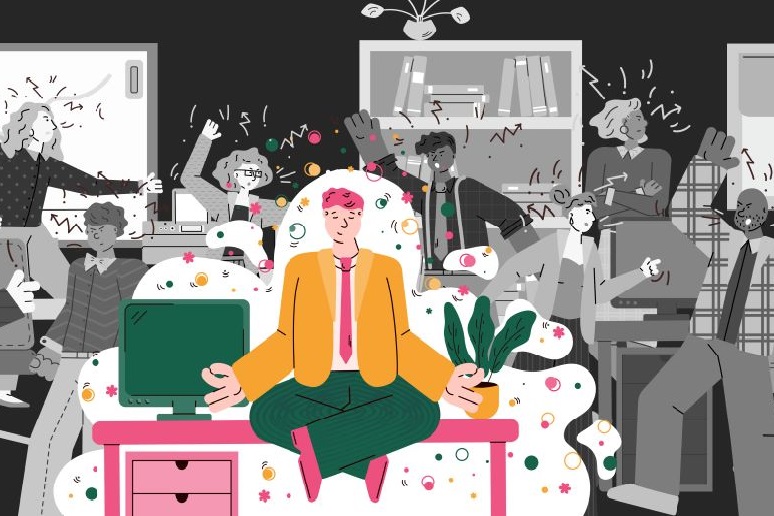Is background office noise music to your ears, or a discordant cacophony that drives you bonkers? How you answer this question will say a lot about the type of office environment you’ll need to work in to be your productive, innovative, and collaborative best.
Background noise has long been a topic of discussion for workplace strategists, particularly as it relates to the open office. The work-from-home experience hasn’t done much to quiet the din around office noise.
Popular Science picked up the topic earlier this week in a
post exploring the future of work. Regarding noise, the author shares research from cognitive researcher Anja Jamrozik, who has found that “small things” can really take a toll on employee wellbeing. These small things include noise… “when people are experiencing noise, especially speech, it’s very distracting,” she shared. Open offices, with all that potential for shared listening, make people “generally unhappy,” she added.
And so, easing office noise will be one potentially positive effect of reconfiguring or reoccupying the open office around health and safety as guiding principles. But
MIT Technology Review shared a much different perspective in a piece it published this week on background noise desired by newly WFH workers used to the sounds of an open office.
This piece starts with a fun little anecdote about audio engineer Stéphane Pigeon, who created myNoise.net, a resource for at-work background noise. Pre-pandemic, Pigeon apparently received a request to replicate office sounds. His knee-jerk reaction was “no, no, no,” Pigeon told the author. How confusing would that be? “ ‘People don’t want to listen to those sounds.’ ”
As it turns out, some do. Pigeon caved to additional similar requests, and according to the article, in March released
Calm Office; 250,000 streams later, this is now one of the most popular myNoise choices. “Pigeon is still bewildered that Calm Office’s clackety keys, fax machine whirrs, and distant strains of conversation have become as popular as they are,” the author shared.
Sounds of Colleagues, from two Swedish ad agencies, is also proving quite popular during this pandemic period. One user, of a reported 1.2 million, said that the sound of keyboard clicking makes him feel not only safe but not alone though socially distanced at home. Nick Perham, a U.K. academic who has researched background noise and office sounds, shared with MIT Tech Review that myNoise, Sound of Colleagues, and other such products “help to create the ‘babble effect’ experienced in a coffee shop: voices and sounds meld together, helping people focus by blocking out annoying background noises.”
No doubt, as the MIT Tech Review article concludes, listening to background office noise even when it’s just little old you working in a bedroom-cum-office helps bring about a feeling that all is normal. And with that, we can presume you’re at your productive, innovative, and collaborative best.



